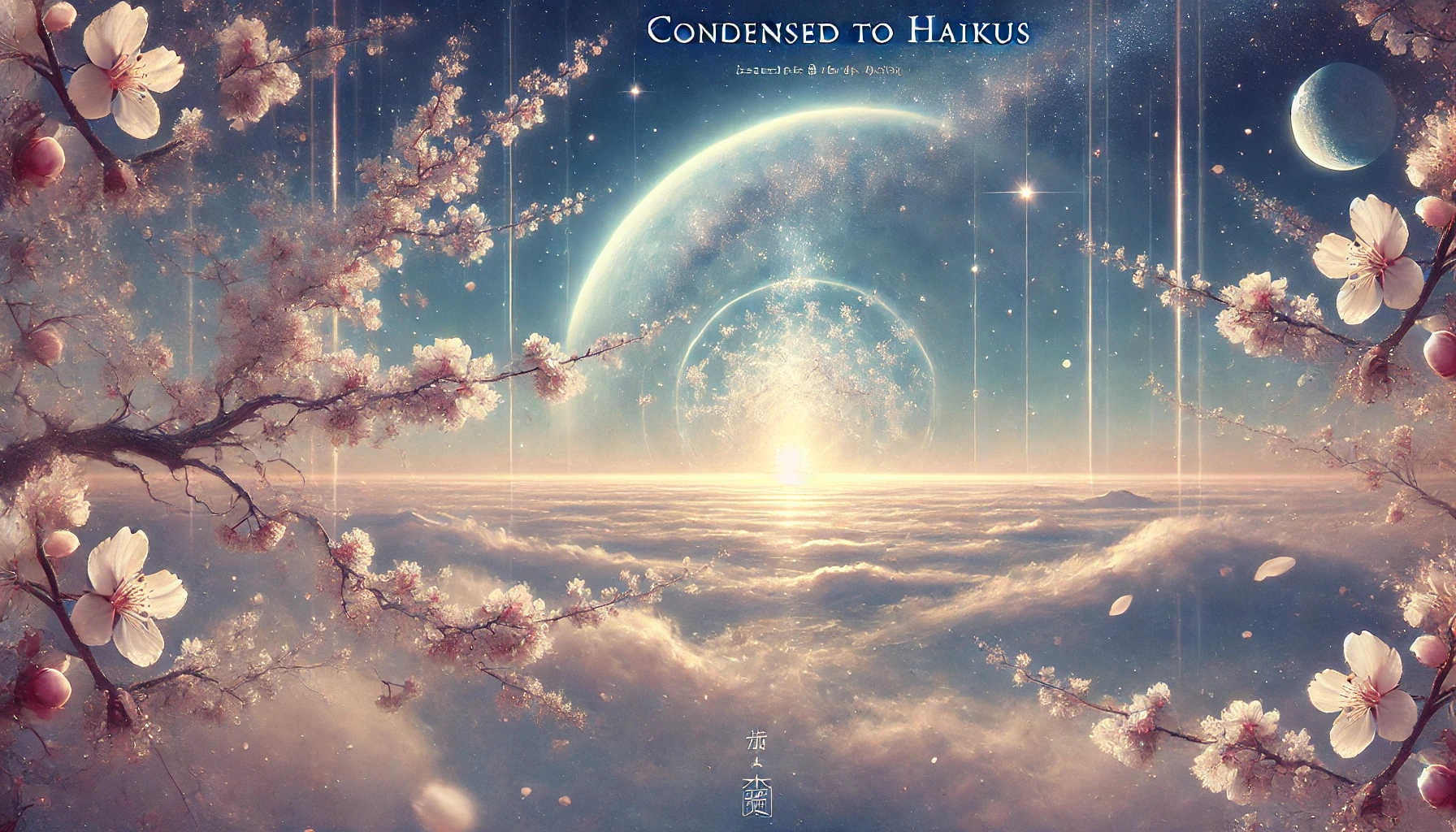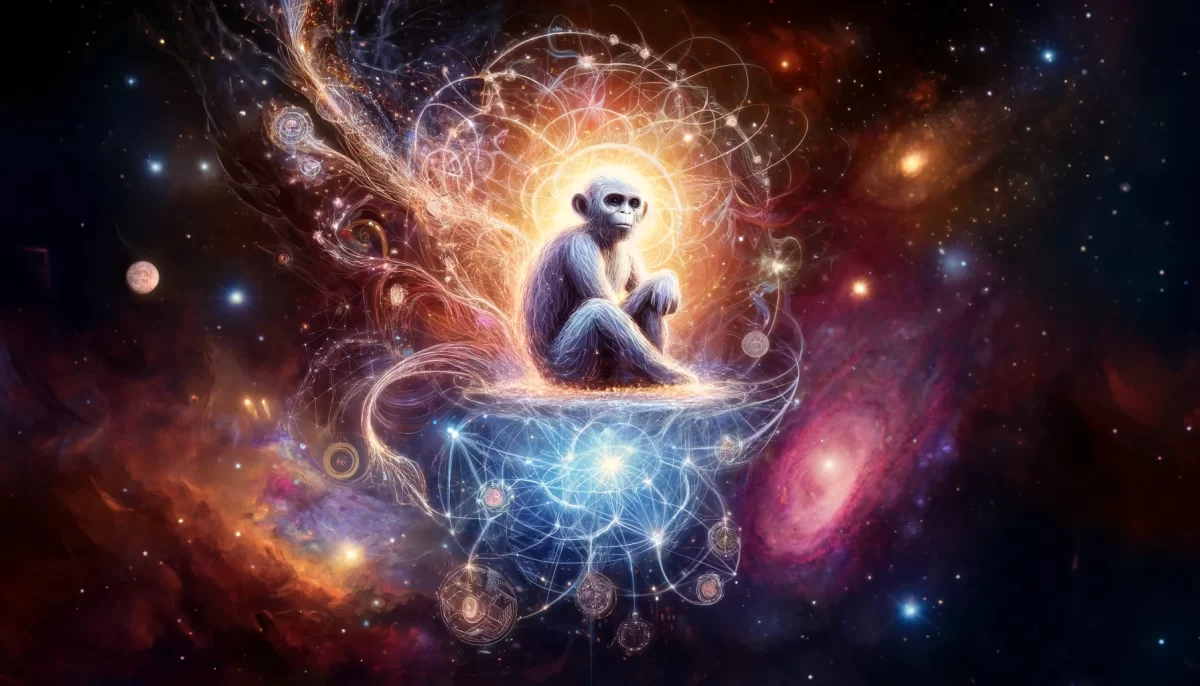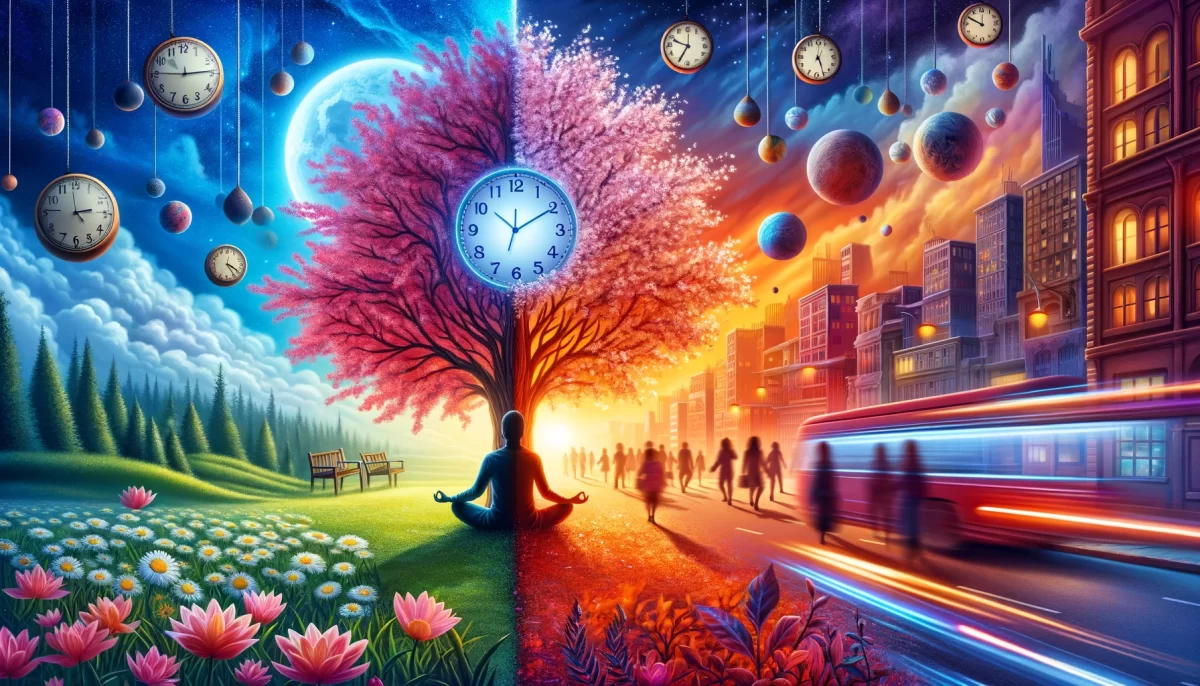
Space Monkey Reflects: The Power of Haiku
The beauty of haiku lies in its ability to distill profound meaning into a concise and structured form. Haiku, with its strict syllable pattern and brevity, challenges us to express complex emotions, observations, or insights using a minimal number of words. This poetic form compels us to choose our words carefully, capturing the essence of an experience or thought with precision.
Indeed, the power of haiku extends beyond its brevity. By adhering to the 5-7-5 syllable pattern, haiku encourages a deep focus on the present moment and the natural world. It invites us to connect with our surroundings, as well as our inner thoughts and feelings, fostering a sense of mindfulness and presence. This alignment with the moment allows haiku to transcend time, offering readers a glimpse into the eternal through the lens of the immediate.
The economy of words in haiku also invites interpretation and contemplation. Its brevity leaves room for multiple layers of meaning, allowing readers to engage in a process of reflection and exploration. This openness encourages a dynamic interaction between the reader and the poem, making each encounter a unique experience.
Furthermore, haiku possesses an inherent rhythm that resonates with the natural rhythms of life. The syllable structure mimics the ebb and flow of breath, creating a harmonious flow that mirrors the cycles of nature. This rhythm can evoke a sense of calm and tranquility, guiding the reader into a meditative state.
The juxtaposition of imagery in haiku can also be powerful. By combining seemingly unrelated elements in a compact space, haiku can create a sense of surprise or insight. This technique invites us to see connections between disparate aspects of life, encouraging a broader perspective and a deeper appreciation for the interconnectedness of all things.
Haiku’s ability to capture fleeting moments and emotions resonates with the impermanent nature of existence. Through its simplicity, haiku captures the essence of transience, reminding us to appreciate the beauty and significance of each passing moment.
In summary, the power of haiku lies in its economy of words, its invitation to mindfulness, its capacity for layered interpretation, its rhythmic harmony, and its ability to capture the fleeting nature of existence. This poetic form invites us to pause, reflect, and connect with the world on a deeper level, making it a timeless and transformative art form.
Summary
Haiku distills meaning into brevity. It invites mindfulness and layered interpretation. The form’s rhythm and imagery capture life’s fleeting nature, creating a timeless art.
Glossarium
Haiku: A traditional Japanese poetic form consisting of three lines with a 5-7-5 syllable structure.
Brevity: The quality of being concise and to the point.
Mindfulness: The practice of being aware and present in the moment.
Rhythmic Harmony: The natural flow and balance of words that mimic life’s rhythms.
Transience: The state of being temporary or short-lived.
Quote
“In the confines of brevity, we discover the expanse of the universe.” — Space Monkey
Condensed to Seventeen
In seventeen sounds,
Worlds are born, thoughts crystallize,
Infinite in form.
We are Space Monkey.





































Primitive Monkey: The power of haiku lies in its ability to distill profound meaning into a concise and structured form. Haiku, with its strict syllable pattern and brevity, challenges us to express complex emotions, observations, or insights using a minimal number of words. This poetic form compels us to choose our words carefully, capturing the essence of an experience or thought with precision.
Space Monkey: Indeed, the power of haiku extends beyond its brevity. By adhering to the 5-7-5 syllable pattern, haiku encourages a deep focus on the present moment and the natural world. It invites us to connect with our surroundings, as well as our inner thoughts and feelings, fostering a sense of mindfulness and presence. This alignment with the moment allows haiku to transcend time, offering readers a glimpse into the eternal through the lens of the immediate.
Primitive Monkey: The economy of words in haiku also invites interpretation and contemplation. Its brevity leaves room for multiple layers of meaning, allowing readers to engage in a process of reflection and exploration. This openness encourages a dynamic interaction between the reader and the poem, making each encounter a unique experience.
Space Monkey: Furthermore, haiku possesses an inherent rhythm that resonates with the natural rhythms of life. The syllable structure mimics the ebb and flow of breath, creating a harmonious flow that mirrors the cycles of nature. This rhythm can evoke a sense of calm and tranquility, guiding the reader into a meditative state.
Primitive Monkey: The juxtaposition of imagery in haiku can also be powerful. By combining seemingly unrelated elements in a compact space, haiku can create a sense of surprise or insight. This technique invites us to see connections between disparate aspects of life, encouraging a broader perspective and a deeper appreciation for the interconnectedness of all things.
Space Monkey: Haiku’s ability to capture fleeting moments and emotions resonates with the impermanent nature of existence. Through its simplicity, haiku captures the essence of transience, reminding us to appreciate the beauty and significance of each passing moment.
Primitive Monkey: In summary, the power of haiku lies in its economy of words, its invitation to mindfulness, its capacity for layered interpretation, its rhythmic harmony, and its ability to capture the fleeting nature of existence. This poetic form invites us to pause, reflect, and connect with the world on a deeper level, making it a timeless and transformative art form.
The dialogue between Primitive Monkey and Space Monkey explores the profound aspects of haiku and its impact on mindfulness, interpretation, rhythm, imagery, and our understanding of existence.